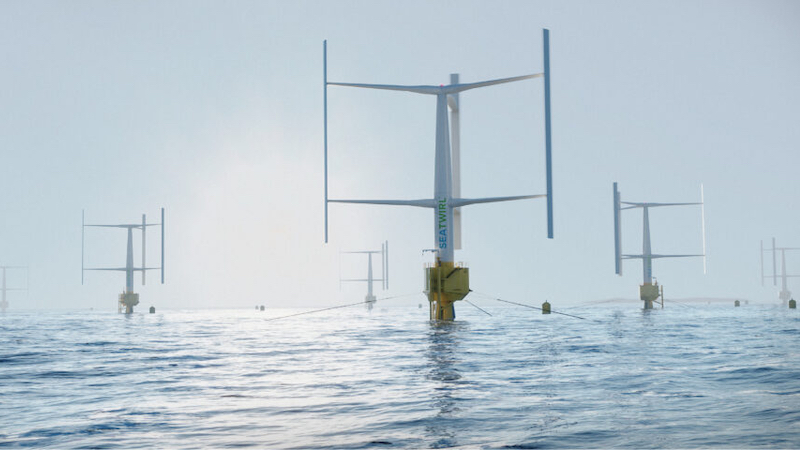Vertical axis floating wind turbine starts operation
Not far from the Norwegian coast, the Swedish company SeaTwirl is currently testing a floating wind turbine. The system is quite compact compared to classic systems. The special feature: a vertical axis.
When it comes to sustainability, the federal government has set itself ambitious goals in recent years. the greenhouse gas emissions should decrease by 65 percent by 2030 compared to 1990). The federal government is now aiming for climate neutrality by 2045.
But until then there is still a long way to go, which focuses in particular on the energy sector. Because 2021 just 41 percent of the energy required came from sustainable sources.
It should be pretty clear that innovative and new approaches are needed. The manufacturer SeaTwirl from Sweden may show how the generation of electricity from wind power could soon look like. Because the prototypes of the group will soon start their first test operation.
Vertical axis floating wind turbine
According to the manufacturer, the so-called S2X generates up to one megawatt of energy and will soon be swimming not far from the Norwegian coast. Actually, the project was supposed to start about a year ago. However, environmentalists and associations delayed the commissioning. Now there should be no more stumbling blocks. The special thing about the S2X is its very special shape.
The vertical turbines consist of an elongated mast and several rotors arranged parallel to it. This has the advantage that the wind turbines can be set up particularly close together without recording any major losses in performance.
Since the electrical systems and moving parts are close to the water surface, maintenance costs are significantly lower than with conventional systems.
Wind energy: New system is relatively compact
Overall, the prototype is 135 meters long. 55 meters are above the water surface, 80 meters below. The turbine has a diameter of 50 meters and is powered by rotor blades that are 40 meters high. The system works most reliably in areas with a water depth of 100 meters or more.
It remains to be seen what results the pilot project will bring to light. If the system pays off, we should soon see the structures near the German coast. This also seems urgently necessary so that we can achieve the goals mentioned at the beginning in the long term.
Also interesting:



